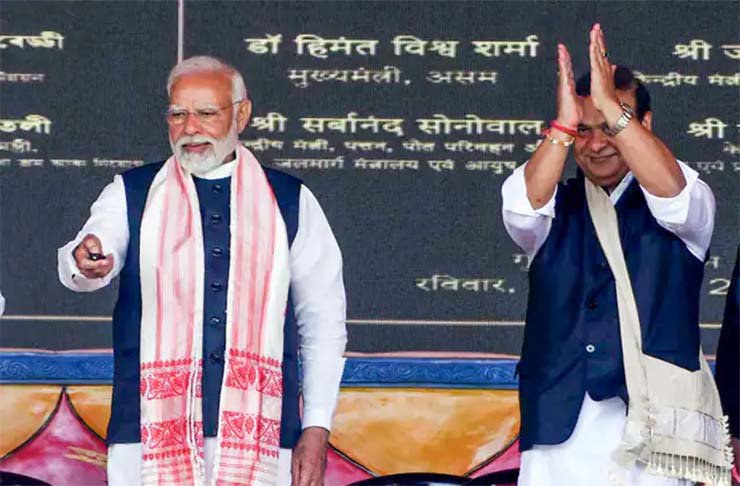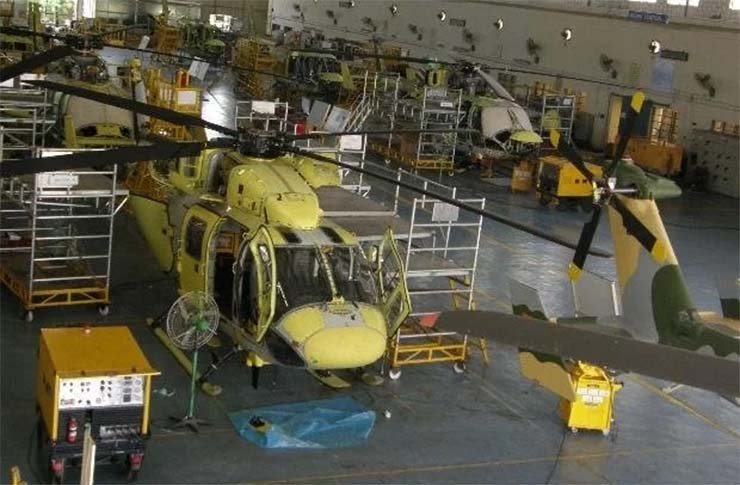
Assam’s Chief Minister, Himanta Biswa Sarma has expressed a clear vision of transforming Assam into a hub for technology and manufacturing. The state is currently developing a policy to support the establishment of a new defence corridor.
The idea of creating a Defence Industrial Corridor (DIC) in Assam was first presented earlier this year during the Aero India exposition in Bengaluru. However, state officials’ lack of interest in the project hampered early talks, but some recent developments – like a successful semiconductor sale and Chief Minister Himanta Biswa Sarma’s rekindled enthusiasm – have given the initiative fresh life. A stakeholder gathering is planned for coming November to coincide with the Global Investor Summit – Advantage Assam 2.0, in which a number of international defence businesses are anticipated to take part.
It has become imperative for India to enhance the manufacture of defence and aerospace equipments, which is one of the aims of the DPEP Policy 2020, along with promoting the ‘Make in India’ programme
Defence corridor and its importance
The defence corridors are purposefully designed areas aimed at boosting domestic manufacturing of aerospace and defence-related goods. The ‘Make in India‘ campaign becomes a crucial role in fostering self-reliance as India grows into a major defence market with increasing defence expenditures.
According to Global Firepower’s 2024 military strength rankings, the Indian military came in at number four. India continues to be largely dependent on imported military hardware to maintain one of the biggest military operations in the world, even with its high ranking. Due to this dependency, the defence technology industry experiences increased import and training costs, which is subject to conditions established by foreign suppliers, and sees a halt in innovation and development.
So it has become imperative to enhance the manufacture of defence and aerospace equipments, which is one of the aims of the Defence Production & Export Promotion Policy, 2020, along with promoting the ‘Make in India’ programme. The purpose of this programme is to increase exports and decrease the amount of defence equipment that is imported.
The Defence corridors seek to translate the demands of the armed forces into drivers of economic growth in accordance with the standards for indigenisation established by the Ministry of Defence (MoD). It is imperative that the nation’s defence manufacturing infrastructure be supported, especially through the growth of Micro, Small, and Medium-Sized Enterprises (MSMEs) in the aerospace and defence industries. This assistance encourages entrepreneurship and innovation, which is crucial for fulfilling the equipment needs of our country.
The Defence corridors seek to translate the demands of the armed forces into drivers of economic growth in accordance with the standards for indigenisation established by the Ministry of Defence
Existing defence corridors
There are now two Defence Industrial Corridors in India, one in Tamil Nadu, The TN Defence Industrial Corridor comprising Chennai, Tiruchirappalli, Coimbatore, Salem and Hosur was announced by the Government of India and inaugurated on January 20, 2019, and the other in Uttar Pradesh. The UPDIC is planned across 6 nodes namely – Lucknow, Kanpur, Jhansi, Agra, Aligarh, and Chitrakoot, spread across Central, Eastern, and Western regions of Uttar Pradesh and along the Golden Quadrilateral connecting Delhi – Kolkata .
These corridors have played a major role in attracting international investment and improving domestic defence manufacturing. With its growing industrial base and strategic location, Assam is well-positioned to follow in this success’ footsteps.
It is also expected that the proposed Defence Industrial Corridor (DIC) in Assam will stimulate the state’s economy, create job generation, and boost skill development. In addition, it will support India’s defence manufacturing self-sufficiency, which is in line with the government’s goal of tripling defence output to USD 25 billion by 2025.

However, there are obstacles facing the endeavour. For the state administration, getting clearance from the Ministry of Defence and negotiating deals with foreign companies for investments and land leasing would be crucial. Furthermore, the development of the corridor will need collaboration between several parties and a significant investment in infrastructure.
The creation of a Defence Industrial Corridor in Assam, notwithstanding these challenges, offers a significant chance for the country and the state. It highlights Assam’s growing importance in the national and international economy as well as its potential to become a major force in the defence manufacturing industry.
The Indian defence sector is dependent on imports since it lacks the technological depth required to develop and produce key systems and essential components, despite its huge manufacturing and R&D base
Challenges in defence sector
The Indian defence sector is dependent on imports since it lacks the technological depth required to develop and produce key systems and essential components, despite its huge manufacturing and R&D base.
The Indian governments’ continued preference for licenced production of several significant systems can be attributed in large part to this technology mismatch. 58 percent of India’s defence purchase is from licenced manufacturers, indicating the nation’s excessive reliance on outside funding.
Many of the measures planned by the government to boost local manufacturing have not yet been completely implemented. As a result, there are now significant gaps in time between the announcement of changes and their actual implementation in the form of contracts, manufacturing, and delivery. Overcoming these implementation delays will continue to be a major problem in the near future due to India’s bureaucratic structure.
Even with a discernible uptick in foreign arms sales, India’s defence sector continues to lag behind the government’s export goals. The main issue is that the Defence Public Sector Undertakings (DPSUs) have not performed up to par. Significant system exports have encountered difficulties recently.
For instance, Malaysia chose a Korean substitute for Hindustan Aeronautics Limited (HAL), the biggest defence manufacturer in India, when it came to awarding a contract for its Tejas light combat aircraft. Likewise, Garden Reach Shipbuilders and Engineers was unsuccessful in a major procurement held in the Philippines, underscoring the difficulties DPSUs have in exporting their goods.
It is imperative that the nation’s defence manufacturing infrastructure be supported, especially through the growth of the MSMEs in the aerospace and defence industries
The way forward
The accomplishment of the ‘Make in India’ goals – which include developing modern technologies, creating jobs, attracting investments, satisfying industry demands, advancing the manufacturing sector, and achieving self-reliance for India – will determine the project’s success.
The establishment of appropriate infrastructure, bolstering support for a dynamic supply chain network, prioritising skill development, and engaging established national and international players to attract capital and viable projects can provide the necessary momentum
It is imperative to delineate short-term, medium-term, and long-term roadmaps, taking into account existing capabilities, requirements, technological advancements, and the development of capital and infrastructure. This strategic planning approach will facilitate the establishment of clusters with complementary ecosystems to support the overall development objectives
The Defence corridors seek to translate the demands of the armed forces into drivers of economic growth in accordance with the standards for indigenisation established by the Ministry of Defence (MoD). It is imperative that the nation’s defence manufacturing infrastructure be supported, especially through the growth of the MSMEs in the aerospace and defence industries. This assistance will encourage entrepreneurship and innovation, which is crucial for fulfilling the equipment needs that are expected to surpass the $250 billion goal by 2025.
–Chirayu Sharma, is an MBA working as a finance professional and research analyst. He contributes insightful opinions on a diverse range of topics to various journals.
-Dr Punit Saurabh, teaches strategy and international relations at the Institute of Management, Nirma University, Gujarat.















